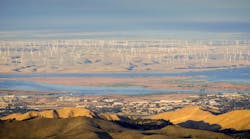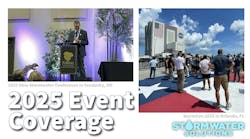About the author: Jennifer Steffens is regional regulatory manager for CONTECH Stormwater Solutions. Steffens can be reached by e-mail at [email protected].
The intent of U.S. Green Building Council Leadership in Energy and Environmental Design (LEED) Sustainable Sites Credit 6.2 (SS 6.2) is “to limit disruption and pollution of natural water flows by managing storm water runoff.” The requirements necessary for meeting this intent are clearly spelled out: Capture 90% of the average annual rainfall, and treat it by removing 80% of total suspended solids (TSS). While the rating system does not define TSS, it does recommend reliance on field monitoring data that is compliant with the Technology Acceptance Reciprocity Partnership (TARP) protocol or the Technology Acceptance Protocol-Ecology (TAPE) when screening storm water best management practices (BMPs).
Although seemingly straightforward, experience has raised some concerns. There is a caveat in the LEED criteria that BMPs “designed in accordance with [a] state or local program” are acceptable. Because most state and local programs do not require robust TARP or TAPE studies to qualify for 80% TSS credit, this is contrary to the original LEED intent. In addition, the technologies listed as preferred by LEED (alternate surfaces and nonstructural techniques) are rarely tested utilizing these protocols.
Defining TSS
Many states require 80% TSS as a common removal requirement, but few define TSS. Failing to define a representative particle size distribution can have major implications for BMP performance and approval criteria, especially for proprietary BMPs that are sized based on assumptions about the TSS load. If the actual load is less coarse than assumed, the BMP will be undersized and can fail to protect receiving waters. To ensure consistent design and performance across BMP types, standards should be expanded to include conservative particle size assumptions.
TARP and TAPE protocols set criteria for reviewing storm water treatment practices. Although a growing number of local storm water programs require data collected in accordance with one of these protocols, most leave the decision up to the site engineer.
All too often he or she is left to sort through incomparable data collected under outdated or unrecognized protocols and potentially cherry-picked by the BMP manufacturer.
If the appropriate review were to take place, oil/grit separators, hydrodynamic settling devices and screening systems would rarely meet the intent of this LEED credit on their own. A growing body of research has shown that proprietary BMPs employing unit processes such as filtration and infiltration provide superior performance to flow-through gravity systems and should be relied on to earn credit for SS 6.2.
TARP and TAPE Studies
The majority of studies conducted under TARP and TAPE protocols involve proprietary treatment devices. Nonstructural and many land-based practices have yet to be evaluated in accordance with TARP or TAPE but are listed as preferred for LEED credits. While not suggesting these practices are inferior to proprietary systems, it is important that the same level of scrutiny be applied to all types of storm water treatment practices. In order for the process to work, alternate means of approval should be eliminated.
Implementing uniform criteria for BMP use and approval on LEED projects is essential if we truly hope to “limit disruption and pollution of natural water flows by managing storm water runoff.” As the industry standard for “green” building, LEED typically sets the bar high. Unfortunately, the local standard component of the storm water criteria section creates a loophole that currently allows for the approval of inferior BMPs in some jurisdictions.
Download: Here


